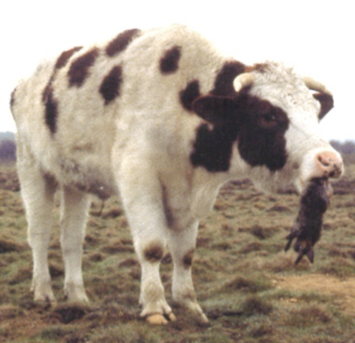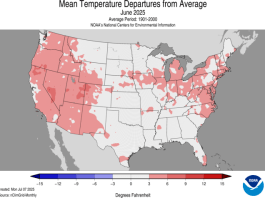The purchase of a bull is a significant investment and represents the genetic future of the calves and in many cases replacement heifers that will go into the cowherd. The following are thoughts on a process that producers can use when planning the purchase of their next sire.
What do you want your cowherd and the calves you produce to do? What genetics will do that?
 Clearly identifying goals for what cattle are expected to do and the traits and characteristics that most impact profitability for the cow-calf enterprise is a foundational first step. Are calves sold at weaning, as yearlings, or is ownership retained through until harvest? What do the purchasers of your calves want? Can you produce what they want and have a functional female if replacements are retained? What is an optimum target given the production system cows are expected to operate under? These “big picture” questions should be answered prior to the selection and purchase of a bull.
Clearly identifying goals for what cattle are expected to do and the traits and characteristics that most impact profitability for the cow-calf enterprise is a foundational first step. Are calves sold at weaning, as yearlings, or is ownership retained through until harvest? What do the purchasers of your calves want? Can you produce what they want and have a functional female if replacements are retained? What is an optimum target given the production system cows are expected to operate under? These “big picture” questions should be answered prior to the selection and purchase of a bull.
Where is my cowherd at genetically?
“Wherever you are at, that is where you are.” Randy Hunter, DVM and stocker/yearling operator from Wheatland, Wyoming uses this phrase when teaching cattle handling skills to help people recognize everyone is at a different place in their ability. Once you know where you are, you can identify a plan to move toward where you want to go. This phrase applies well to thinking about the genetics of the cowherd. What is the genetic makeup of the cowherd currently? Are you pleased with where you are? What traits or characteristics would you like to see change? What is the target for where you want to end up? How much change is needed to reach an optimum level given your resources?
Sorting out the bull breeder
Selecting the breeder and breeding program of your next bull is more important than the choosing of the bull himself. The following are characteristics in no particular order that need to be considered when deciding who will be your genetic provider.
1. Honesty and Integrity
2. Customer Service
3. Genetic Program and Focus
4. Bull Development Plan
5. Value Added Opportunities
Sorting through all the information
 Selecting a bull today can be an overwhelming task for many cow-calf producers. Bull sale catalogs are full of information, including actual animal performance, ratios, Expected Progeny Differences (EPDs), gene testing, economic indexes, ultrasound measurements, etc. There are also individual breeders who utilize their own scoring system for characteristics such as disposition and udder soundness of a bull’s dam. Having access to all this information is great. However, trying to sort through and discern what these data mean and which information is relevant to what you want can be a bit like trying to get a drink out of a fire hose! What you want is there, but you can find yourself getting smacked in the face with more than you wanted when you go to get it.
Selecting a bull today can be an overwhelming task for many cow-calf producers. Bull sale catalogs are full of information, including actual animal performance, ratios, Expected Progeny Differences (EPDs), gene testing, economic indexes, ultrasound measurements, etc. There are also individual breeders who utilize their own scoring system for characteristics such as disposition and udder soundness of a bull’s dam. Having access to all this information is great. However, trying to sort through and discern what these data mean and which information is relevant to what you want can be a bit like trying to get a drink out of a fire hose! What you want is there, but you can find yourself getting smacked in the face with more than you wanted when you go to get it.
Know and understand what the numbers mean
The first priority is to know and understand EPDs. Research has shown EPDs are a tremendous and valuable tool for giving an indication of what a bull’s true breeding value is in terms of the genetics he will pass on to his calves. Understanding what the numbers mean and which ones are relevant for the traits which you are selecting for is important. Matt Spangler, University of Nebraska-Lincoln Extension Beef Genetics Specialist has put together a NebGuide titled “EPD Basics and Definitions” that explains what these traits mean and how they can be used to compare animals within a breed to one another. In most cases, EPDs are not comparable across breeds. An exception to this is Red Angus and Simmental EPDs which are a multi-breed EPD and are calculated in the same way.

Economic indexes are the second set of numbers to understand. Matt Spangler defines economic indexes as “A collection of EPDs weighted by their economic value such that traits with greater impact on production goals have a larger economic weight associated with them.” Understanding how different economic indexes are calculated for the breed you are evaluating can help you to know if they should be used as a tool for selection.
The third set of numbers to grasp and evaluate is an individual’s own records and performance against those of his contemporaries. These indicate how a bull did in his own right. While worth looking at and evaluating, they are secondary to EPDs for identifying a bull’s true breeding value.
Identify the bulls that meet your “numbers” criteria
Sorting through the bulls on paper and identifying those that meet your criteria is the next step. Plan to do this well in advance of the bull sale so you give yourself adequate time. The more stringent the criteria and the more values you include, the fewer bulls you will have to pick from.
Visually appraise bulls for structural soundness and phenotype
While a bull may look good on paper, when you actually see him, he may not be the type and kind that you want. Remember that this bull’s purpose in life is to get cows pregnant. That means he has to be able to move and cover cows.
Get the breeder’s opinion
A solid seed stock supplier should be a tremendous resource for you in selecting your next sire. Communicate to them what you want and ask what bulls they recommend. See if the bulls you have identified are ones they believe will meet your goals.
Set a budget and give yourself options
 Bull sales can be fast moving events. Know ahead of time what you are willing to spend. Identify your options in terms of bulls you will consider. If the bulls you want quickly blow by your limit, you want to have evaluated if there are others in the offering that still meet your criteria.
Bull sales can be fast moving events. Know ahead of time what you are willing to spend. Identify your options in terms of bulls you will consider. If the bulls you want quickly blow by your limit, you want to have evaluated if there are others in the offering that still meet your criteria.
Conclusion
Selecting your next herd sires is an important event. Being well prepared can help to ensure that the bull you pick takes your herd genetically the direction that you want to go. An excellent resource that further discusses preparing to purchase your next herd sire is the “Rancher’s Guide to Profit”. This set of videos prepared by the Red Angus Association is available at their website.




